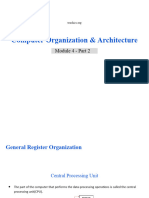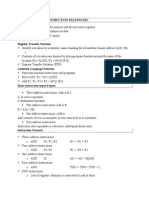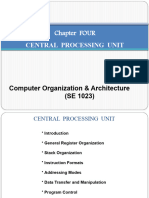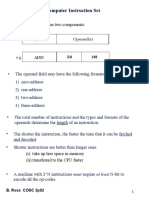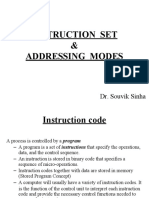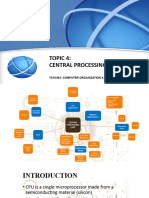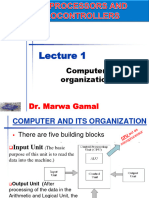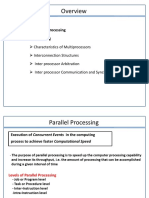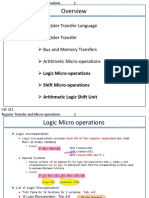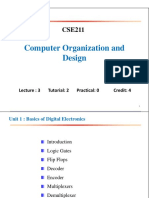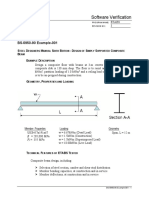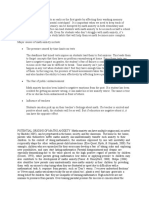0% found this document useful (0 votes)
145 views46 pagesCPU Organization & Instruction Sets
This document discusses the central processing unit and its organization. It covers general register organization, stack organization, instruction formats, addressing modes, data transfer and manipulation instructions, program control instructions, and RISC vs CISC architectures. The major components of the CPU are also examined, including the ALU, registers, and instruction pipelining. Different addressing modes like direct, indirect, register, and immediate addressing are described.
Uploaded by
Yash Gupta MauryaCopyright
© © All Rights Reserved
We take content rights seriously. If you suspect this is your content, claim it here.
Available Formats
Download as PDF, TXT or read online on Scribd
0% found this document useful (0 votes)
145 views46 pagesCPU Organization & Instruction Sets
This document discusses the central processing unit and its organization. It covers general register organization, stack organization, instruction formats, addressing modes, data transfer and manipulation instructions, program control instructions, and RISC vs CISC architectures. The major components of the CPU are also examined, including the ALU, registers, and instruction pipelining. Different addressing modes like direct, indirect, register, and immediate addressing are described.
Uploaded by
Yash Gupta MauryaCopyright
© © All Rights Reserved
We take content rights seriously. If you suspect this is your content, claim it here.
Available Formats
Download as PDF, TXT or read online on Scribd
/ 46










